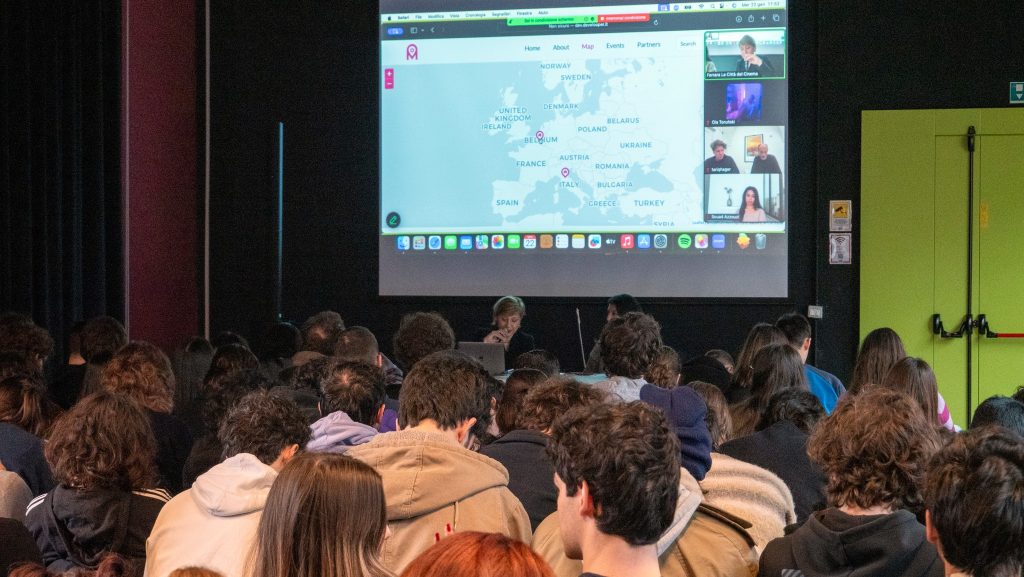The Symposium was not a traditional academic conference, but an international space for dialogue—bringing together the voices of project partners, students, and experts.
At the core of the event was a key question: How can cinema and the narrative of places become tools for transmitting Jewish memory to new generations, giving voice and dignity back to individual stories?
The event opened with remarks by Stefano Muroni and Valeria Luzi of Blow Up Academy, the project lead, who introduced the origins and vision of Le Case di Micòl: A project that combines historical research, education, and film production, creating a European memory mapthrough the “houses” of four young Jewish women in four different cities across the continent.
The Digital Platform and the Memory Map
Liliana Grasso, from the Fondazione Centro Studi “Città di Orvieto” (CSCO), presented the interactive digital platform, one of the project’s most innovative tools.
The publicly accessible map connects places, stories, and audiovisual materials—making memory participatory, accessible, and educational.
More than an archive, it is an educational and civic tool, inviting students and European citizens to explore history through the real traces left by those who lived it.
Voices from International Partners
The discussion included contributions from representatives of European film schools and partner institutions:
- Jakub Dubsky and Tariq Hager from the Prague Film School (Czech Republic) presented the work on Pavla Weiszová, the “Micòl of Prague,” explaining how historical research and cinematic language came together in the students’ creative process.
- Aleksandra Toruński from the Warsaw Film School (Poland) shared insights on how film can restore complexity and humanity to biographies erased by History, bringing focus back to everyday life, gestures, and spaces.
- Vanessa Van Balen from ACT – Académie de Cinéma et Télévision (Belgium) recounted the story of Jenta Gothelf, the “Micòl of Antwerp,” and how the local Jewish community continues to preserve and pass on the memory of families who disappeared.
The Italian Contributions
Amedeo Spagnoletto, director of MEIS – National Museum of Italian Judaism and the Shoah, emphasized the importance of teaching about the Shoah through everyday stories, without monumentalizing the tragedy but instead bringing it back to the human and relational dimension.

Piervittorio Milizia, representing the Institute of Contemporary History of Ferrara (ISCO), highlighted the symbolic value of the map as a tool for knowledge and awareness:
“Maps are never neutral,” he said, “and Le Case di Micòl builds an emotional geography—made of lived places, not monuments.“
The Symposium, curated by Ferrara La Città del Cinema, stood out for its cultural quality and its ability to engage a diverse audience: students, teachers, film professionals, and scholars. The high level of contributions, the active participation of the partners, and the enthusiasm of the young attendees turned the event into a shared educational experience—one that successfully combined historical memory, art, and contemporary reflection.

The project Le Case di Micòl is funded by the CERV – Remembrance 2022 call and coordinated by Ferrara La Città del Cinema. Partners: Prague Film School, Warsaw Film School, ACT (Belgium), Blow-Up Film and TV Academy (Italy), Fondazione per il centro studi ‘Città di Orvieto’, Fondazione Giorgio Bassani, MEIS – National Museum of Italian Judaism and the Shoah, Istituto di Storia Contemporanea di Ferrara, and Istituto di Istruzione Superiore Luigi Einaudi.